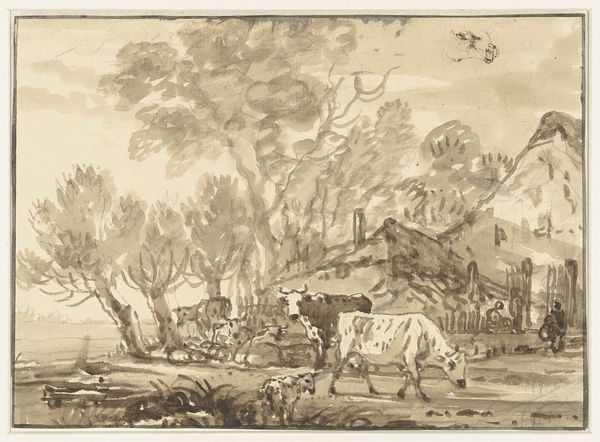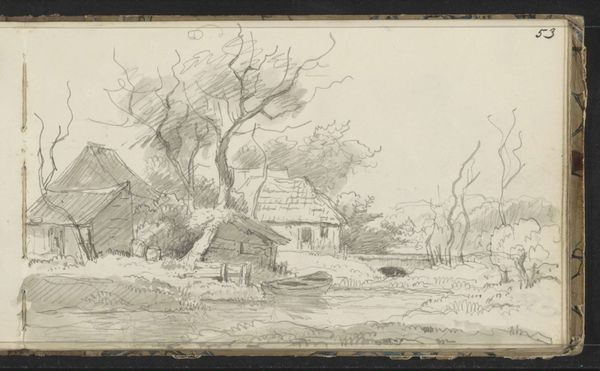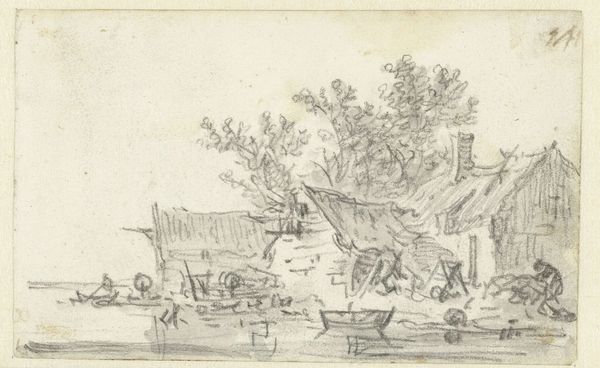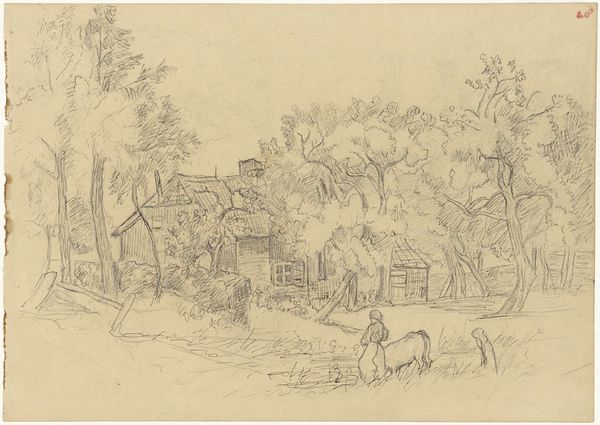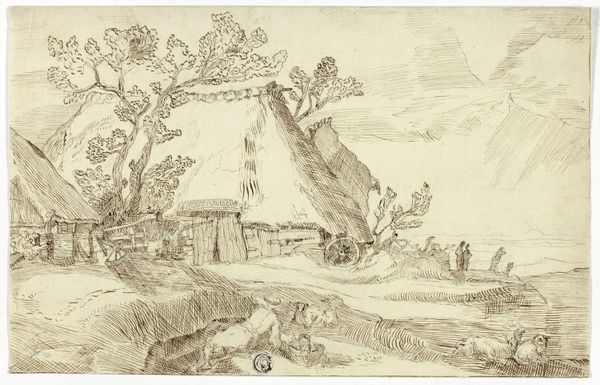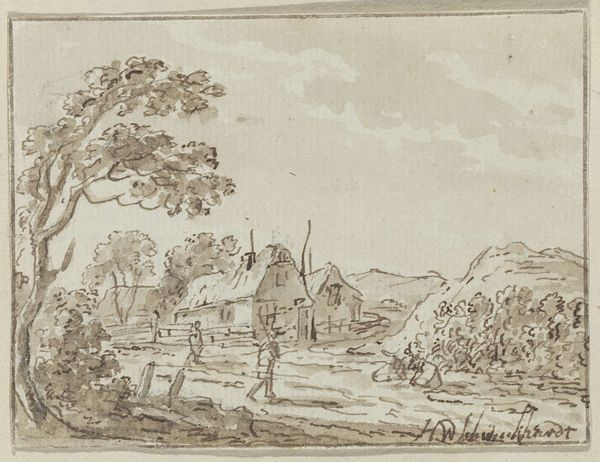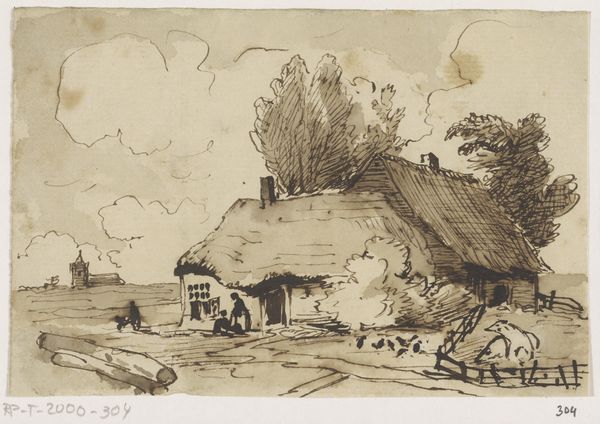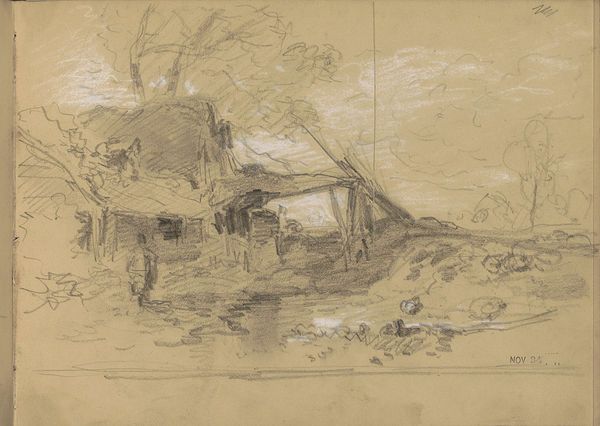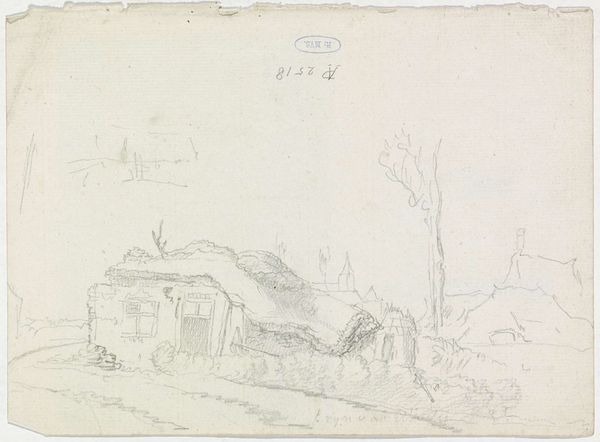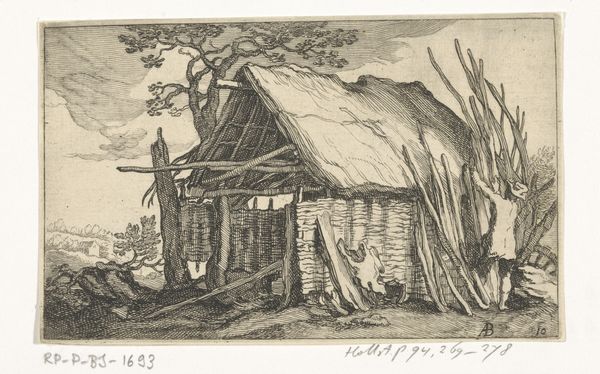
drawing, pencil
#
drawing
#
ink drawing
#
pen sketch
#
landscape
#
etching
#
folk-art
#
romanticism
#
pencil
#
genre-painting
Dimensions: height 211 mm, width 268 mm
Copyright: Rijks Museum: Open Domain
Curator: We're looking at "Boerenwoning waarbij een boer zijn paard dresseert" an ink and pencil drawing created between 1770 and 1825 by Simon Andreas Krausz. It roughly translates to "Farmhouse where a farmer is training his horse". Editor: My first impression? A fleeting glimpse. The rapid strokes of pencil and ink evoke a sense of transience, like catching a memory before it fades. I can almost feel the wind in those sketched trees. Curator: That transience you describe is interesting considering the symbolism behind horses at this time. They’ve long been potent emblems of power, virility, and freedom. In Krausz's era, though, the act of "dressing" the horse - breaking its will, taming it - that's deeply symbolic too. Editor: Of subjugation, you mean? Absolutely. The image holds a tension between untamed spirit, that horse practically levitating, and the farmer, the agent of control, ready to restrain. Is the farmhouse itself an emblem? Shelter, perhaps? Imprisonment? Curator: Both, maybe. It speaks to the dualistic existence in that era of folk art. Think about what "genre painting" aimed to portray—the unvarnished truth, the romantic ideal. That push and pull between nature and artifice— it embodies both impulses, the farmer’s desire to train the horse and the raw natural setting of the farm. Editor: There is certainly an underlying tension embedded in Krausz’s folk-art rendering. But let's not underestimate the deeper resonances these symbols had for viewers then—the horse less a wild thing, more an intrinsic part of agrarian life, even family. This isn’t merely subduing nature, it is forging partnership with nature’s creatures. Curator: A necessary one, undeniably. Without horses in agriculture, there were very few alternatives. But even then, I keep feeling this tug, almost a melancholic one. Like the image understands its time but also yearns for something less confined. It's as if the drawing acknowledges a changing world where nature becomes increasingly subservient. Editor: Perhaps Krausz himself wrestled with that transition. That sense of tension definitely breathes through the art— an artist reflecting an agrarian life in flux. I can feel both admiration and a pang of loss, sketched with those rapidly fleeting strokes.
Comments
No comments
Be the first to comment and join the conversation on the ultimate creative platform.
